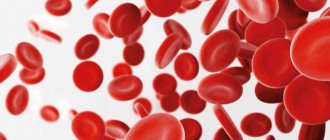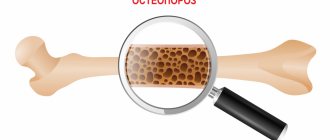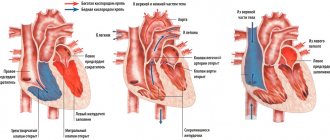Alanine aminotransferase (ALT) is an enzyme that is present in cells. Its main amount is concentrated in the liver, so the test is used as an indicator of the presence of liver disease. It is used to diagnose cirrhosis and hepatitis in combination with other tests. The main function of the enzyme in the body is to release energy from food. Normally, the enzyme concentration should not exceed 45 U/l. This norm is established for adults over 18 years of age. In children, normal values vary depending on age.
AST and ALT
Tests for AST and ALT are two studies that are often prescribed by a doctor in combination. Why is it so important to measure the levels of these two enzymes at the same time? The idea of the information content of their relationship was first put forward by scientist Fernando De Ritis from Italy. He used the method for the differential diagnosis of hepatitis of various types. Since then, his name has become a household name. The Ritis coefficient shows the ratio of AST and ALT activity. In healthy people, the coefficient is 0.91-1.75. The indicator is informative only if the values of these enzymes exceed the reference values. If in a double test only the AST values are exceeded, this means that the myocardium is damaged. When the heart muscle is damaged, the AST level increases 8-10 times, ALT - only 1.5-2 times. If a patient has a liver problem, on the contrary, the ALT level increases 8-10 times, and AST values only 2-4 times.
Classification
To determine the level of hyperenzymemia, a special scale is used:
- Moderate degree – the level is slightly increased. This is possible with hepatitis of alcoholic or viral origin.
- Average - indicators are increased 6 times from the norm - necrotic processes in the liver.
- High level - an increase in the norm by 10 times or more - liver ischemia.
The acute condition caused by the disease causes transaminase activity: for example, with hepatitis, hyperenzymeemia is observed on the 14-20th day of illness, and then within a month the levels decrease to normal.
In the chronic course of the disease, during the period of remission, hyperenzymemia is not observed and the indicators are moderately or slightly increased. Cirrhosis in the latent stage will not show an increase in transaminases.
To make a diagnosis, the doctor must evaluate not only the increase in transaminase levels, but also their combination with other criteria. These indicators significantly narrow the range of pathologies. For example, jaundice or acute liver failure necessarily cause an increase in bilirubin. The concentration of enzymes may increase slightly. This is called bilirubin aminotransferase dissociation. Only a specialist can determine such subtleties. Therefore, self-diagnosis and self-medication are excluded.
Excessive levels of liver transaminases or hyperenzymemia are an indicator of trouble in the liver, indicating necrosis of liver cells. This condition can occur again, replacing normalization. This usually indicates the onset of a new inflammation or relapse of a chronic pathology.
What is an enzyme
AST or AST is a protein synthesized inside the cells of the human body. Its highest concentrations are observed in the tissues of the myocardium, muscles and liver. To a lesser extent, the enzyme is present in the kidneys, pancreas, cells of the central nervous system and brain. It is encoded by the GOT 1 and GOT 2 genes. In a healthy person, the level of the enzyme is quite low. Its active release into the blood begins when the heart muscle ruptures, as well as liver destruction as a result of hepatitis, cirrhosis or cancer. The enzyme is important because it contains vitamin B6, which is involved in amino acid metabolism and, accordingly, the synthesis of insulin. In tests, the indicator is measured in units per liter of blood.
The importance of transaminases in therapy
Most often, an increase in aminotransferases is an unfavorable diagnostic sign, indicating the destruction of hepatocytes. Elevated enzyme levels may be detected after normalization of values. This indicates the development of a new disease or an exacerbation of an old pathology - the renewed death of liver cells.
A high concentration of enzyme substances is not a disease, but only an indicator reflecting the presence of pathology. To normalize the values, it is necessary to eradicate the main source. The detected disease is being treated. Extremely high enzyme values require inpatient treatment.
In case of gland pathologies, the therapeutic course scheme is determined by the specific disease. Thus, for the viral form of hepatitis, antiviral agents are prescribed, which are highly effective in the acute period or at the initial stage of development. Against the background of toxic or alcoholic forms of hepatitis, symptomatic therapy is required.
When the cause is cirrhosis of the liver, mechanical injury to the organ, surgical intervention is performed, which involves excision of the affected liver tissue.
Due to the high sensitivity of the indicators, doctors can detect abnormalities in the gland in the absence of a characteristic clinical picture.
Range of application of AST analysis
- In cardiology as a marker of myocardial infarction. In the heart muscle the enzyme is more than 10,000 times more active than in the blood. During a heart attack, intense release of the enzyme occurs.
- For liver pathologies. Diseases such as hepatitis and cirrhosis are certainly accompanied by the destruction of liver tissue and a sharp jump in AST values.
- For chronic alcoholism.
- In obstetrics and gynecology. During pregnancy, a woman may experience a slight increase in AST values. This is explained by the effect of the growing fetus on the mother's liver. In the first trimester, its values should not exceed 31 U/l, in the second and third – 30 U/l.
- In endocrinology for diabetes and/or excess weight.
Complexes with this research
Female infertility Analysis of the state of female reproductive health 16,210 RUR Composition
Anti-aging diagnostics in postmenopause Control of age-related changes during the postmenopausal period 12,630 RUR Composition
Women's anti-aging diagnostics Monitoring of basic blood parameters in women aged 40+ RUR 12,070 Composition
IN OTHER COMPLEXES
- Examination during pregnancy. 1st trimester 16,690 RUR
- Biochemistry of blood. 13 indicators 3,490 RUR
- Advanced male anti-aging diagnostics RUB 33,710
- Pregnancy planning. Clinical indicators 6,630 R
- Examination during pregnancy. 3rd trimester 9,620 RUR
How to prepare for analysis
To increase the reliability of the analysis, some rules and restrictions should be observed. So on the eve of the study, you should refrain from eating fatty and smoked foods, as well as confectionery. It is best if the test is performed on an empty stomach in the morning. When taking medications, you should consult your doctor about their possible withdrawal. The fact is that during a biochemical blood test, many medications can affect the results of the study. When treated with antidepressants, antibiotics, diuretics and other drugs, the test readings may be distorted. In addition, immediately before a visit to the treatment room, it is prohibited to perform ultrasound, x-ray examination and physiotherapy procedures.
Symptomatic manifestations of disorders
It should be noted that the symptoms of these disorders are always the same, regardless of the type of pathology. When liver transaminases are elevated, the symptoms are:
- chronic lethargy and fatigue;
- attacks of sudden weakness; loss of appetite and nausea for no reason;
- aching pain in the stomach;
- heaviness in the right hypochondrium;
- bloating and gas accumulation;
- generalized night itching of the skin;
- nosebleeds;
- darkening of urine and acholic stool;
- possible yellowing of the skin;
- decreased activity and drowsiness are often observed.
Even if one symptom is noted, it does not hurt to visit a doctor. Timely treatment will allow you to get rid of the disease completely. Otherwise, the pathology becomes advanced and often irreversible.
Decoding the analysis for AST
Normal for women
AST test values vary depending on age and gender. So in women the norm of the enzyme in the blood is 31 U/l. The older a person is, the lower his activity in the body. This is due to a slowdown in metabolism in general. A natural physiological state such as pregnancy also affects enzyme levels. During this period, there may be small jumps in both one and the other direction.
Normal for men
The concentration of the enzyme in men begins to exceed its amount in women starting from 12-17 years. Its higher concentrations are explained by the large volume of muscle tissue. At puberty, the AST norm in boys is about 29 U/l. This is about four units higher than girls at the same age. In an adult man, the enzyme level can reach 37 U/l.
Reasons for the increase
Liver transaminases are elevated with the development of liver and cardiac pathologies. This can be very dangerous. They say:
- about the presence of hepatitis (any form);
- Reye's syndrome - hepatic encephalopathy due to aspirin use;
- steatosis;
- fibrosis;
- cirrhosis;
- cholestasis;
- tumors;
- metastases from other organs to the liver;
- Wilson's disease or hepatocerebral dystrophy (congenital disorder of copper metabolism);
- myocardial infarction (with it, liver transaminases are always persistently elevated);
- parasitic infestations, because in the course of their life, parasites secrete toxins with the destruction of hepatocytes;
- liver injuries also lead to cell necrosis.
With cholestasis, stagnation of bile leads to overstretching of liver cells, their metabolism is disrupted, and in the final chain of disorders, the cells undergo necrosis.
Fatty liver also causes the destruction of normal liver cells and their replacement with fatty ones. In cirrhosis, the cells become necrotic and are replaced by rough connective tissue. Tumors destroy not only hepatocytes, but also surrounding tissues, causing inflammation.
Toxic processes in the liver after long-term use of drugs have been proven, and an increase in transaminases occurs when using any form of the drug - both tablets and infusions are equally harmful. Among them:
- analgesics, statins, antibiotics;
- anabolic steroid;
- NSAIDs;
- Aspirin, Paracetamol, MAO inhibitors (Selegiline, Imipramine);
- hormones;
- sulfonamides;
- barbiturates;
- cytostatics, immunosuppressants;
- Iron and copper preparations also necrotize liver tissue.
So far we have been talking about persistent increases in enzymes. But there is another type of increase - periodic.
Periodic or transient increases in the activity of liver transaminases can also be caused by other extrahepatic pathologies. It can occur with acute pancreatitis, hypothyroidism, obesity, mononucleosis, muscle injuries, burns, muscular dystrophies, and bronze diabetes.
A slight increase in liver transaminases is quite common. It can be triggered by poor ecology, consumption of certain foods rich, for example, in nitrates, pesticides, and trans fats. In any case, deviation from the norm of enzymes in the form of their increase requires a visit to a doctor and a full examination. Especially when heaviness and pain in the right hypochondrium are added.
Diagnostics
To diagnose transaminitis, your doctor will take a thorough medical history and perform a physical examination. It is necessary to conduct a blood test that will determine the levels of:
- glucose;
- gland;
- ferritin;
- total iron binding capacity;
- antibodies to hepatitis B virus;
- antibodies to the hepatitis C virus.
If the tests are normal, the doctor will recommend lifestyle changes and ask for regular checkups until the transaminase levels decrease. Sometimes additional research methods are required, which include ultrasound or checking the level of antibodies in the blood. If transaminase levels remain high for 6 months, your doctor may order a biopsy.
Prevention
- Eat a balanced diet;
- Engage in moderate physical activity regularly;
- Maintain a healthy weight;
- Treat a viral infection;
- Control chronic conditions such as diabetes or autoimmune hepatitis.
Temporary increases in liver enzymes are not unusual. Often this situation can be resolved through lifestyle changes.
When a viral or chronic infection causes elevated transaminase levels, it is important to seek medical attention promptly to prevent further liver damage. Early diagnosis and treatment will help reduce the risk of complications.









